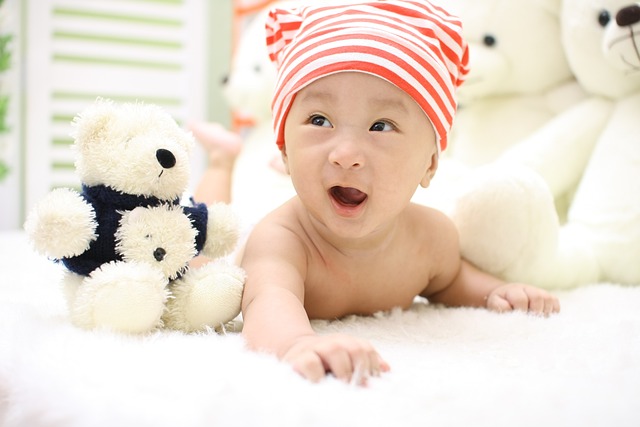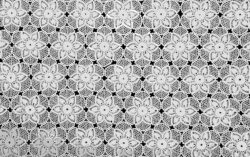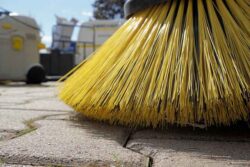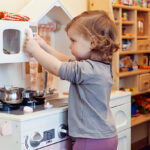
Children form special bonds with their stuffed animals, turning these fluffy companions into cherished friends. However, with all the cuddles and play, stuffed animals can become a breeding ground for germs and allergens. In this guide, we’ll explore straightforward and effective ways to ensure your child’s beloved stuffed animals stay not only soft and huggable but also clean and sanitized. From easy spot-cleaning techniques to gentle washing methods and tips on handling specific materials, we’ve got you covered. Discover the secrets to maintaining these treasured toys, providing your child with a healthy and hygienic environment while preserving the joy and comfort that only a favorite stuffed animal can bring.
Stuffed animals often share in a child’s laughter, tears, and countless adventures, making them more than just toys. Yet, as loyal companions, they also face the wear and tear of everyday play. This guide is a parent’s go-to resource for mastering the art of cleaning and sanitizing their child’s stuffed animals. With simple language and practical advice, we’ll navigate through various methods, addressing stain removal, delicate materials, and storage solutions. Join us on a journey to keep these beloved buddies not only snuggly but also free from allergens and germs, ensuring your child’s playtime remains safe, healthy, and full of joy.
See also our post on How to Tackle Pet Hair: Strategies for a Fur-Free Home
Regular Maintenance
Spot Cleaning
Regularly inspect stuffed animals for visible dirt or spills. Use a damp cloth or baby wipe to gently spot clean the affected areas. This prevents small stains from becoming ingrained over time.
Brushing
Incorporate gentle brushing into your routine to remove surface dust and pet hair. A soft-bristled brush, like one used for baby hair, can be effective. Brush in the direction of the fur or fabric to avoid damaging delicate materials.
Sun Exposure
On a sunny day, take advantage of natural sunlight. Place stuffed animals in direct sunlight for a few hours to naturally disinfect and freshen them. The sun’s UV rays have a natural sanitizing effect.
Fresh Air
Allow stuffed animals to breathe by giving them some fresh air. Place them in a well-ventilated area, like an open window, to help eliminate any odors that may have accumulated.
Rotate Favorites
Encourage your child to rotate their favorite stuffed animals. This not only prevents excessive wear on a single toy but also gives you the opportunity to clean and sanitize those not currently in use.
Washing Machine Techniques
Check Care Labels
Before tossing stuffed animals in the washing machine, check care labels for any specific instructions. Some may be machine washable, while others may require a gentler approach.
Use a Pillowcase
Place smaller stuffed animals in a pillowcase before washing. This provides an extra layer of protection and prevents small parts, like eyes or buttons, from getting damaged or lost in the machine.
Gentle Cycle
Opt for a gentle cycle with cold water and mild detergent. This minimizes the stress on the fabric and maintains the integrity of the stuffed animal.
Air Dry
Avoid using a dryer, as it can cause damage to the toy’s construction and any glued-on parts. Instead, opt for air drying by placing the cleaned stuffed animals on a towel in a well-ventilated area.
Hand-Stitched Toys
If a stuffed animal is hand-stitched or has delicate embellishments, consider handwashing it. Use a mild detergent and lukewarm water, and be gentle to preserve intricate details.
Stain Removal
Immediate Action
Address stains promptly to prevent them from setting. Blot the stain with a clean cloth or paper towel to absorb excess liquid. Avoid rubbing, as it can push the stain deeper into the fabric.
Mild Stain Removers
For stubborn stains, consider using a mild stain remover suitable for the fabric. Test it on a small, inconspicuous area first to ensure it doesn’t cause discoloration or damage.
Baking Soda Absorption
Sprinkle baking soda on damp stains and allow it to sit for a few hours before brushing or vacuuming it off. Baking soda helps absorb moisture and neutralize odors.
Lemon Juice for Brightening
For white or light-colored stuffed animals, a mixture of lemon juice and salt can be effective for brightening. Apply the mixture to the stained area and let it sit before rinsing.
Professional Cleaning
If your child’s stuffed animal is particularly valuable or has sentimental value, consider professional cleaning services. Many companies specialize in cleaning and restoring stuffed animals to their former glory.
See also our post on Tips for Cleaning and Organizing Your Pet’s Medications and Supplements
Sanitization Methods
Freezing
Some stuffed animals can be placed in a plastic bag and frozen for a few hours. Freezing kills bacteria and dust mites. Ensure the stuffed animal is completely dry before freezing.
Steam Cleaning
For stuffed animals that can’t be washed conventionally, consider steam cleaning. Use a handheld steam cleaner to sanitize the surface without exposing the toy to excess moisture.
UV-C Light
Certain toys can be exposed to UV-C light, which is known for its germicidal properties. Be cautious and follow manufacturer guidelines when using UV-C light for sanitization.
Disinfectant Sprays
Choose a child-safe disinfectant spray and lightly mist the stuffed animal, ensuring it dries thoroughly. Test the spray on a small area first to ensure it doesn’t cause any discoloration.
Quarantine Rotation
Implement a rotation system where stuffed animals are quarantined for a short period before returning to regular play. This helps minimize the risk of germs and allergens.
Dealing with Fragile Materials
Handmade Stuffed Animals
If your child has handmade or delicate stuffed animals, avoid machine washing. Instead, spot clean with a damp cloth or use a small, soft brush to remove dirt.
Avoid Submerging
Stuffed animals with delicate materials, like sequins or glued-on accessories, should never be fully submerged in water. Instead, focus on spot cleaning and surface sanitization.
Patch Test
Before using any cleaning or sanitizing method, perform a patch test on a small, inconspicuous area to ensure it won’t damage the delicate materials.
Consult the Maker
If the stuffed animal was a gift or purchased from a small business, reach out to the maker for specific cleaning instructions. They may provide valuable insights on maintaining the toy’s unique features.
Display Only
Consider designating fragile stuffed animals as display-only to minimize wear and tear. Place them on a shelf or in a display case to be admired from a distance.
Allergy Considerations
Hypoallergenic Materials
Opt for stuffed animals made from hypoallergenic materials if your child has allergies. These materials are less likely to trigger allergic reactions.
Regular Dusting
Regularly dust stuffed animals, especially if your child has allergies. Use a soft cloth or a brush to remove dust and prevent allergens from accumulating.
Wash Bedding Too
If your child sleeps with stuffed animals, remember to wash their bedding regularly. This includes pillows, blankets, and any other items that may come into contact with the stuffed animals.
Allergy-Free Stuffed Animals
Explore the market for stuffed animals specifically designed for children with allergies. These toys are often made with allergy-free materials to provide a safer option.
Consult a Pediatrician
If your child experiences persistent allergies or respiratory issues, consult a pediatrician for advice on managing stuffed animals and other potential triggers.
Storage Solutions
Breathable Containers
Store stuffed animals in breathable containers to prevent moisture buildup. Avoid airtight containers, as they can trap moisture and lead to mold growth.
Labeling
Label storage containers to easily identify the contents. This makes it simpler to rotate stuffed animals or locate a specific toy when needed.
Temperature Considerations
Store stuffed animals in a cool, dry place. Avoid extreme temperatures, as they can affect the integrity of the materials and cause colors to fade.
Deterrents for Pests
Place natural deterrents, such as cedar sachets or lavender sachets, in storage containers to ward off pests. These alternatives are child-friendly and add a pleasant aroma.
Regular Checks
Periodically check stored stuffed animals for any signs of pests, mold, or mildew. Early detection allows for prompt action and prevents damage to the toys.
See also our post on Tips for Cleaning and Organizing Your Pet’s Grooming Supplies
Conclusion
In conclusion, ensuring your child’s stuffed animals remain clean and sanitized involves a combination of regular maintenance, washing techniques, stain removal, and specific considerations based on the materials used. By adopting these simple and effective methods, you not only protect your child from potential allergens and germs but also extend the life of these cherished companions. Remember to consider the individual characteristics of each stuffed animal, follow care labels, and consult with professionals when necessary. Embrace the joy that clean and sanitized stuffed animals bring to your child’s life, providing comfort, companionship, and a sense of security.







